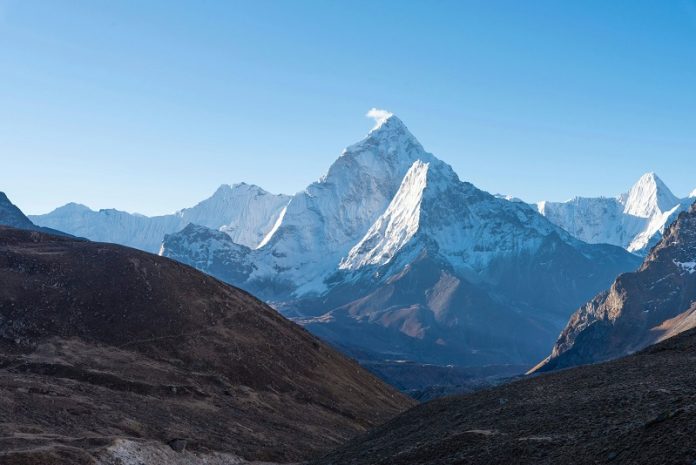
Mount Everest, the tallest mountain in the world, is continuing to grow due to the influence of a nearby river.
According to a recent study by UCL researchers, erosion from a river system about 75 kilometers away is causing Mount Everest to rise by up to 2 millimeters each year, adding between 15 to 50 meters to its height over the last 89,000 years.
At 8,849 meters, Mount Everest, also known as Chomolungma in Tibetan and Sagarmāthā in Nepali, is already the highest peak on Earth.
However, the study published in Nature Geoscience reveals that its extraordinary height can be partly explained by the process of “isostatic rebound.”
This happens when the Earth’s crust lifts upward in response to the loss of landmass caused by river erosion.
As the river carves away the land, the crust beneath Mount Everest rises because the pressure from the Earth’s mantle pushes it upward more than gravity pulls it down.
The Arun River, which runs east of Everest, plays a significant role in this process. Over time, it has carved out a deep gorge, removing massive amounts of earth and sediment.
Around 89,000 years ago, the Arun River merged with the Kosi River, creating an even more powerful network that has accelerated erosion in the region.
This increased erosion has led to more uplift, allowing Mount Everest to grow higher.
Dr. Matthew Fox from UCL Earth Sciences explains, “Mount Everest and the nearby peaks are growing because the uplift is happening faster than the mountains are eroding away.
GPS measurements show they are rising by about 2 millimeters every year.”
Interestingly, the nearby peaks of Lhotse and Makalu, the fourth and fifth highest mountains in the world, are also being lifted by this process. Makalu, which is closer to the Arun River, experiences a slightly faster rate of uplift than Everest.
The study highlights how the Earth’s surface is always changing. Dr. Xu Han, the lead author from China University of Geosciences, says, “The combination of erosion by the Arun River and the pressure from below the Earth’s crust is what keeps pushing Mount Everest higher.”
This discovery provides new insight into why Mount Everest continues to grow and how natural forces are constantly reshaping our planet.
Source: University College London.



